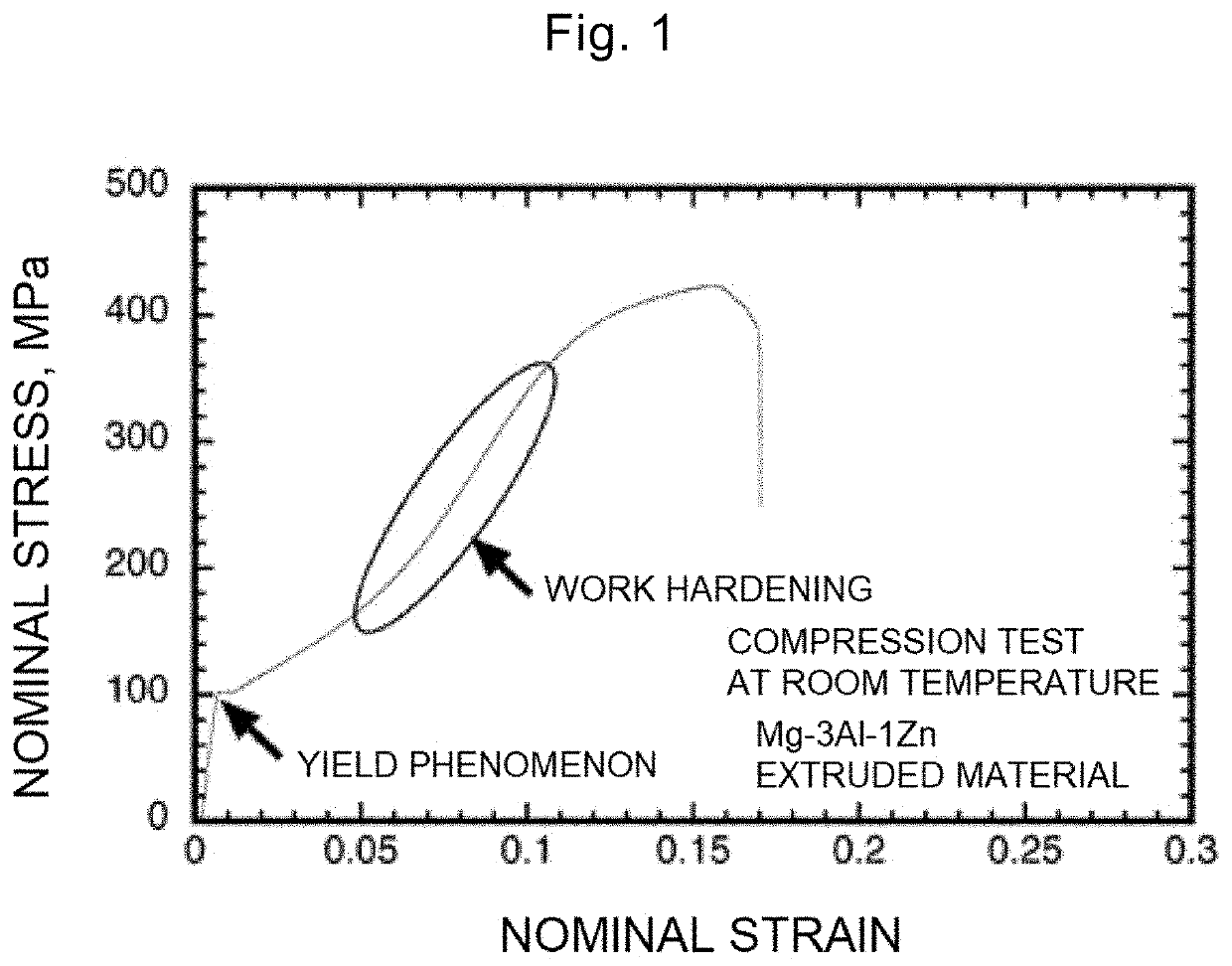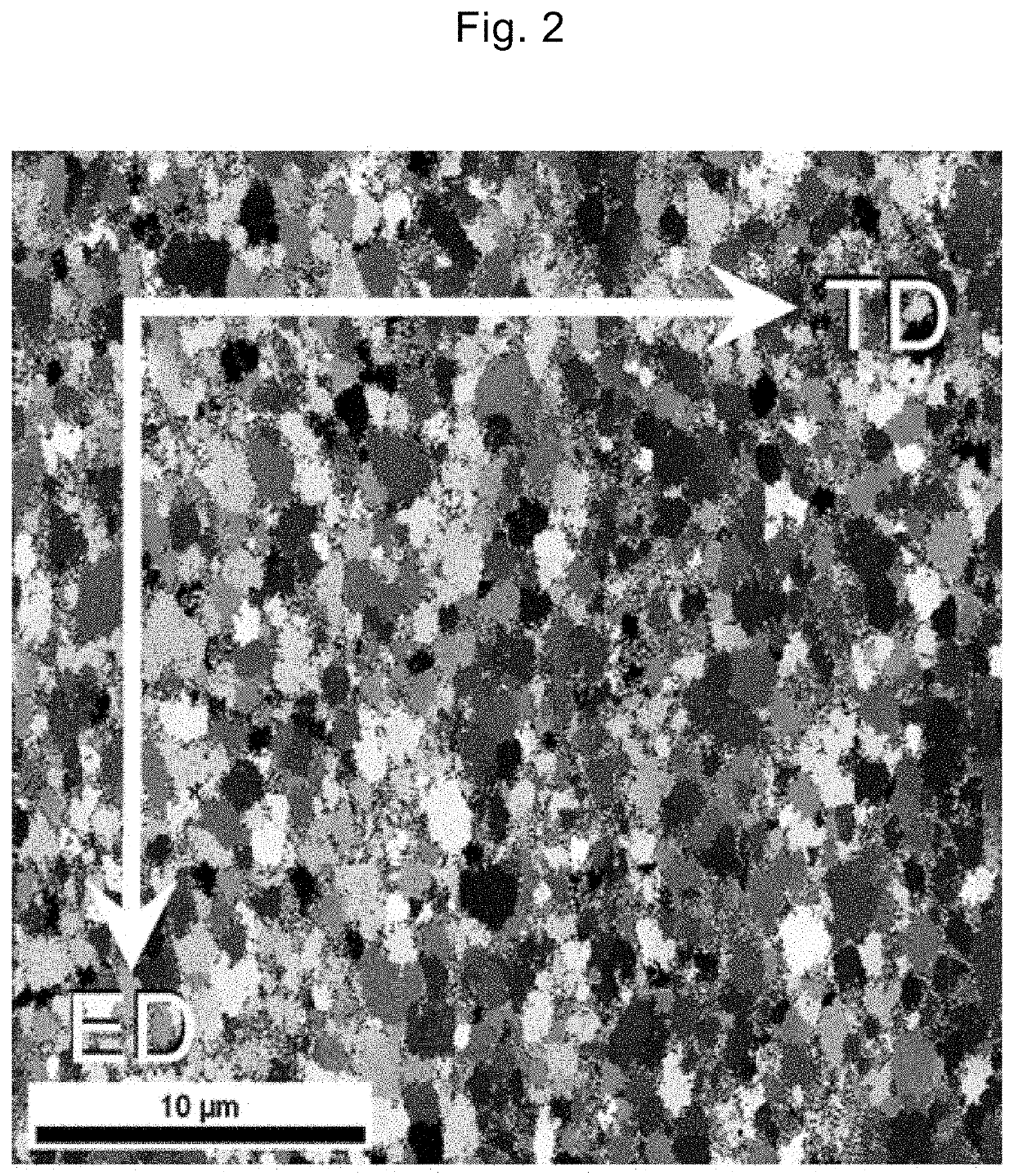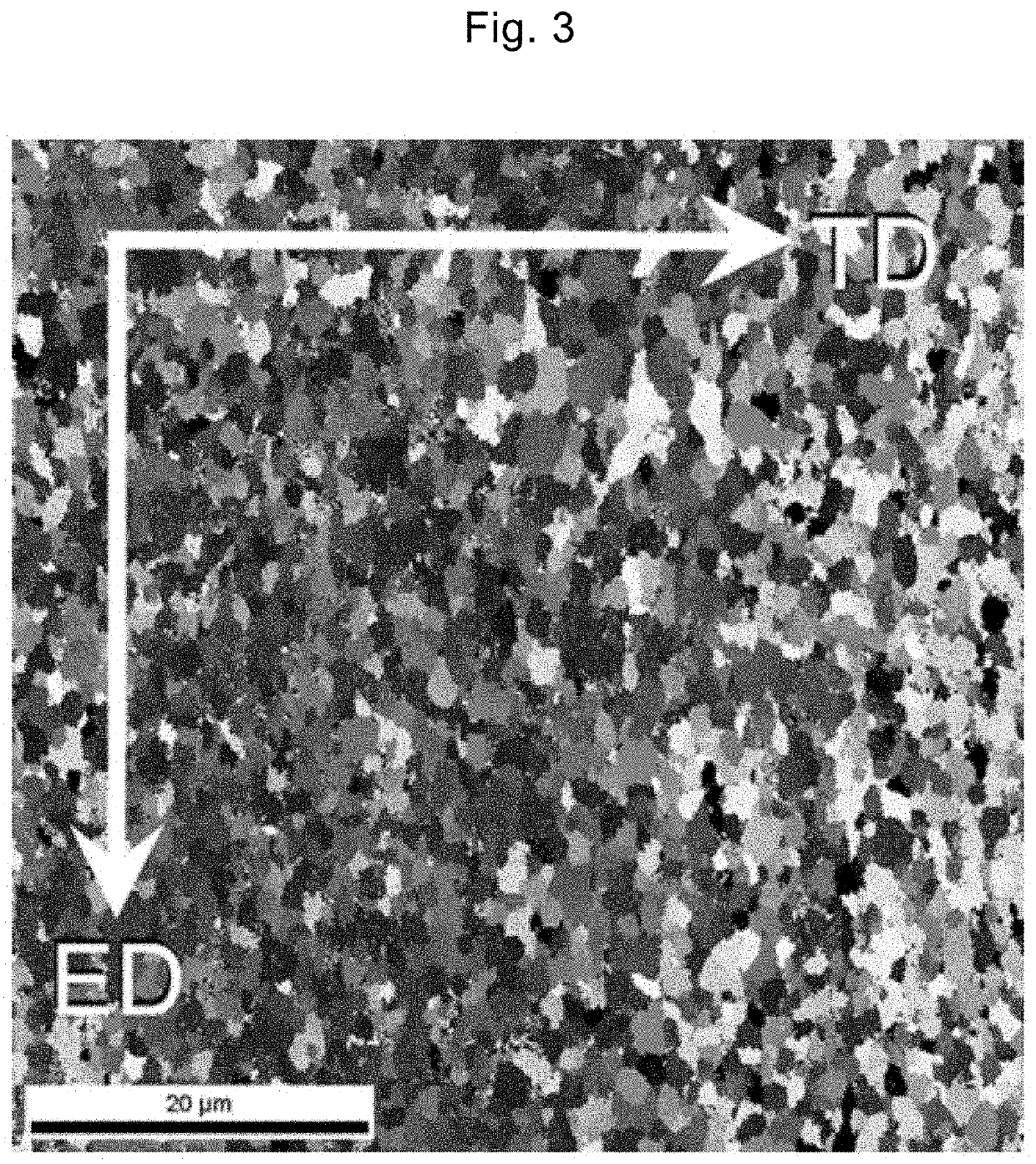Wrought processed magnesium-based alloy and method for producing same
a magnesium-based alloy and wrought processing technology, applied in the direction of mg alloys, poor ductility, prismatic slips, etc., can solve the problem of large difference in critical resolved shear stress (crss) difficult plastic deformation processing at room temperature, and large distance between basal slips and non-basal slips, etc. problem, to achieve the effect of improving compressive deformation, improving work hardening, and rapid stress
- Summary
- Abstract
- Description
- Claims
- Application Information
AI Technical Summary
Benefits of technology
Problems solved by technology
Method used
Image
Examples
examples
[0051]For commercially available pure Bi (99.9 mass %) and commercially available pure Mg (99.98 mass %), Bi and Mg were adjusted by using an iron crucible so that the target contents of Bi were 0.42 mass %, 2.50 mass %, 4.55 mass %, and 7.80 mass %, respectively, and the four types of Mg—Bi alloy casting materials were melted by using an iron crucible. In this regard, casting was performed by using an iron mold having a diameter of 50 mm and a height of 200 mm and by setting the melting temperature to 700° C. and the melting retention time to 5 minutes under an Ar atmosphere. After subjecting the casting material to solution treatment at 500° C. for 2 hours, the element concentrations of the Bi and the inevitable components were analyzed and evaluated by ICP emission spectroscopy. The results of the analysis are shown in Table 1.
[0052]
TABLE 1Castingmaterial No.BiFeSiNiMn1Mg—0.42Bi0.42 (=0.05)0.0020.0030.0042Mg—2.5Bi 2.5 (=0.30)0.0040.0020.0033Mg—4.55Bi4.55 (=0.60)0.0020.0050.0024Mg...
PUM
| Property | Measurement | Unit |
|---|---|---|
| grain size | aaaaa | aaaaa |
| particle diameter | aaaaa | aaaaa |
| frequency | aaaaa | aaaaa |
Abstract
Description
Claims
Application Information
 Login to View More
Login to View More - R&D
- Intellectual Property
- Life Sciences
- Materials
- Tech Scout
- Unparalleled Data Quality
- Higher Quality Content
- 60% Fewer Hallucinations
Browse by: Latest US Patents, China's latest patents, Technical Efficacy Thesaurus, Application Domain, Technology Topic, Popular Technical Reports.
© 2025 PatSnap. All rights reserved.Legal|Privacy policy|Modern Slavery Act Transparency Statement|Sitemap|About US| Contact US: help@patsnap.com



